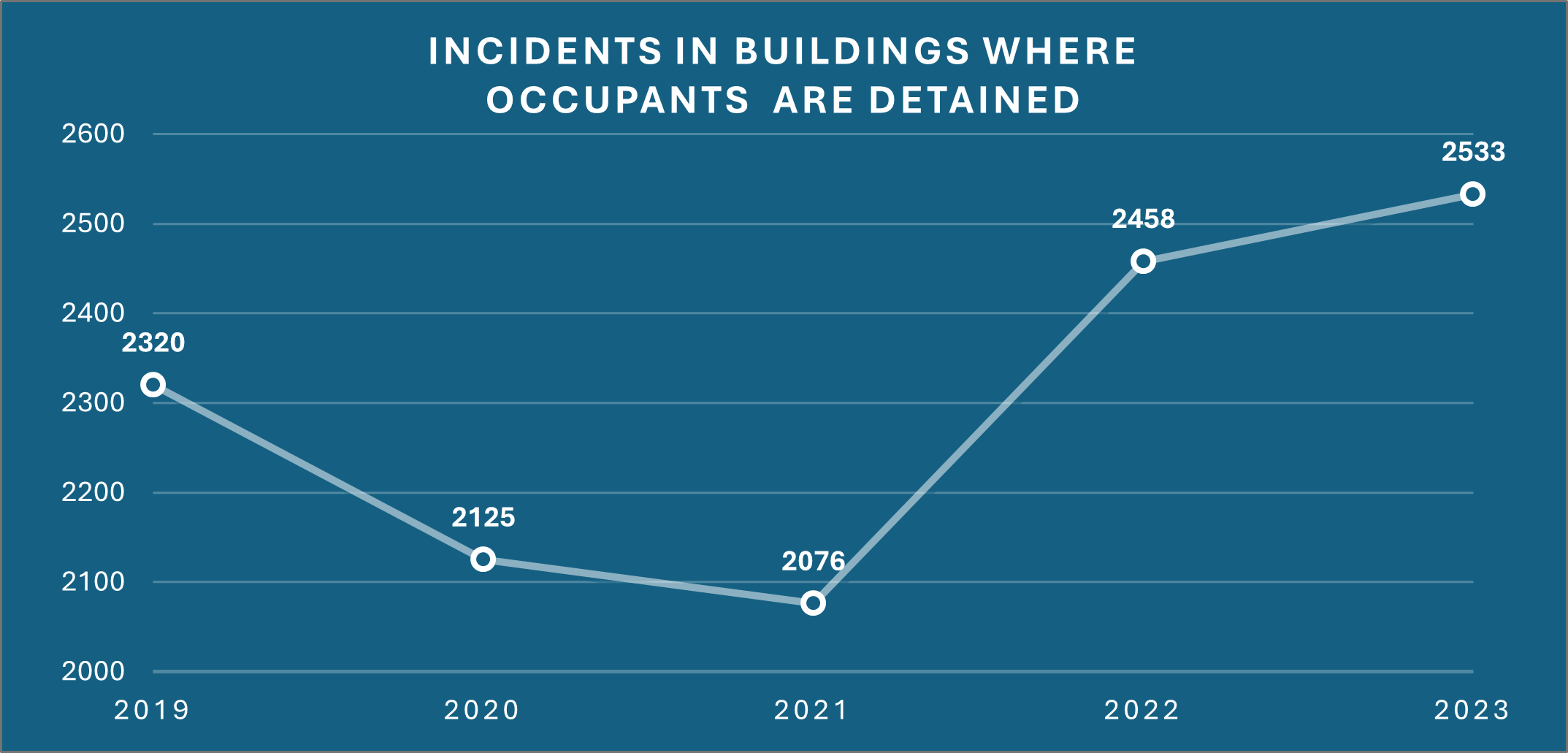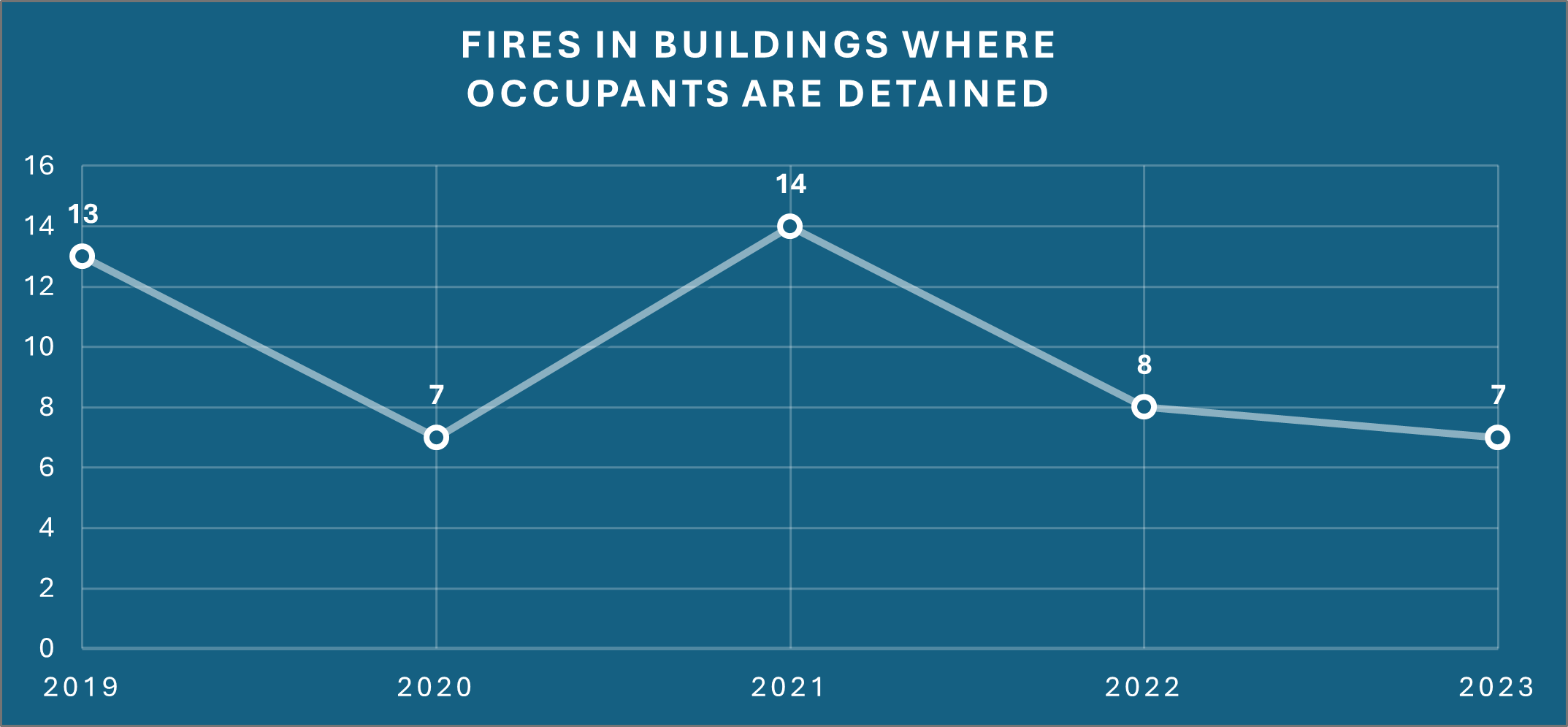By Kaylynn Lucas, Deputy Fire Marshal

April 21, 1930, marks one of the deadliest fires in U.S. history: the Ohio Penitentiary Fire. At the time, the facility, which was built to house 1,500 inmates, had over 4,300 inmates. Tragically, the fire resulted in the deaths of more than 300 inmates and required hospitalization for another 200.
Investigations into the incident revealed that the tragedy could have been prevented. This crucial understanding led to substantial changes in codes and regulations, enhancing safety measures for both existing and new facilities under Building and Fire Codes.
According to the International Fire Code (IFC), Institutional Group I-3 facilities are defined as structures occupied by more than five individuals who are under restraint or security. This classification encompasses prisons, correctional centers, detention centers, jails, prerelease centers, and reformatories, where residents are often unable to ensure their own safety due to imposed security measures.
Essential fire safety codes for Group I-3 occupancies include:
- Chapter 4: Emergency Planning and Preparedness
- Chapter 8: Interior Finish, Decorative Materials, and Furnishings
- Chapter 9: Fire Protection and Life Safety Systems
Chapter 9 of the IFC outlines the requirements for automatic sprinkler systems (903.2.6), fire alarm systems (907.2.6.3), and portable fire extinguishers (906). Every Group I-3 facility is mandated to have both sprinkler and fire alarm systems installed.
Furthermore, Section 901 of the code outlines additional life safety system requirements, such as:
- Annual maintenance of these systems
- Keeping comprehensive records of all inspections, tests, and maintenance performed
- Clearly defined actions to be taken if any systems are impaired, including the implementation of a fire watch until any out-of-service system is restored.
These life safety systems are indispensable in safeguarding Group I-3 occupancies, particularly within prisons and jails, and they play a crucial role in preventing tragedies. If you or your fire department have any questions or require further information, do not hesitate to reach out to our office at (701)328-5555 or infofm@nd.gov. Together, we are committed to fostering a safer environment for all.



